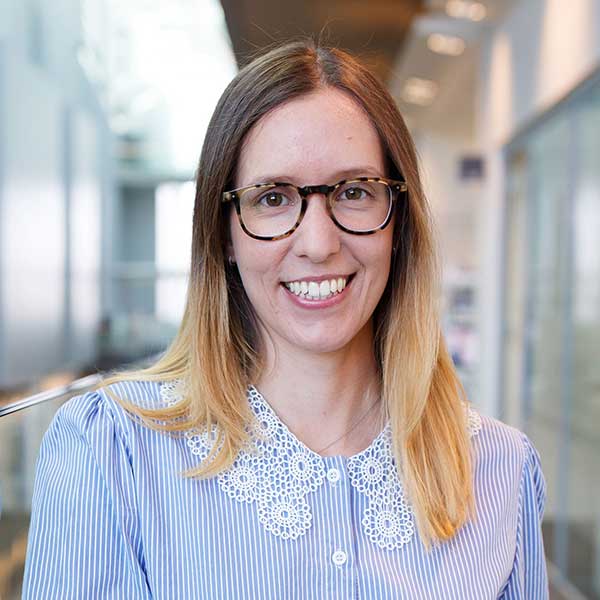
© The Francis Crick Institute, Tracey Croggon
New MPI-CBG research group leader Claudia Gerri started at the institute in February. Claudia and her group are interested in studying how cell lineages are established, and how they communicate with each other and the surrounding microenvironment to build an organ. The group’s goal is to understand how the environmental cues and the neighbouring tissues influence early cell fate decisions, and how progenitor cells interpret these signals and react, thereby affecting their surroundings. The researchers aim to study a very enigmatic process of mammalian reproduction: the development of the fetal placenta and its interactions with the maternal tissues.
Claudia says: “The placenta is a very unique and fascinating organ. It is a transient and exists for a specific time in life, but it is fundamental for proper embryo development as it provides oxygen and nutrients to the growing baby. Without it, we would not be born! If we learn more about the biology of this organ, we can hope to improve therapeutic approaches in the future. At MPI-CBG and the Dresden campus in general, I hope to expand my knowledge towards biophysics and mechanobiology, and I am sure great collaborations will come along.”
Welcome to the institute, Claudia!
Claudia Gerri studied Biology at the University of Milan in Italy, where she obtained her BSc in Biological Sciences and MSc in Molecular Biology. She moved to Germany in 2012 for her PhD at the Max Planck Institute for Heart and Lung Research in Bad Nauheim, where she joined the lab of Didier Stainier to study vascular biology in developing zebrafish embryos. In 2017, she joined the lab of Kathy Niakan at the Francis Crick Institute in London as a postdoctoral training fellow, before accepting a research group leader position at the MPI-CBG.